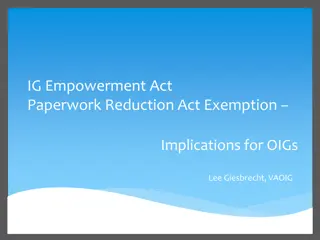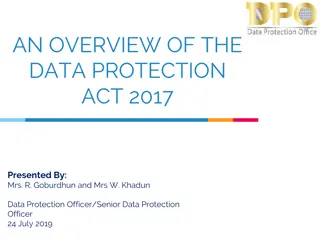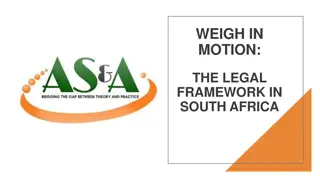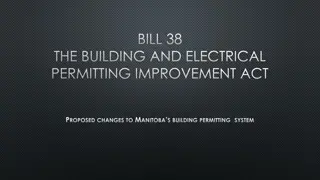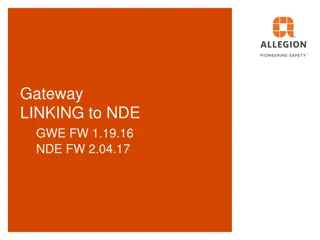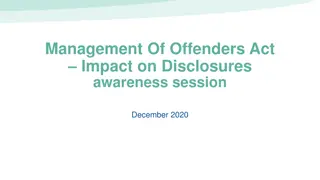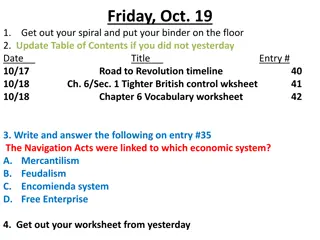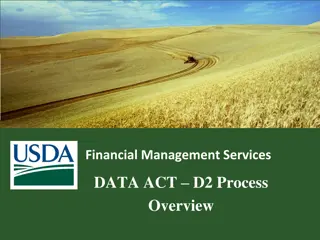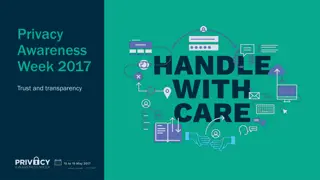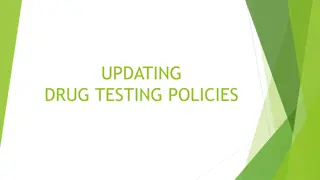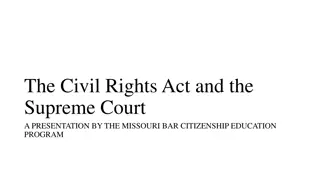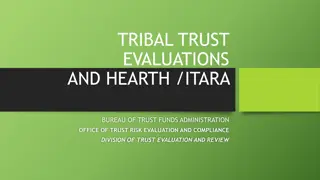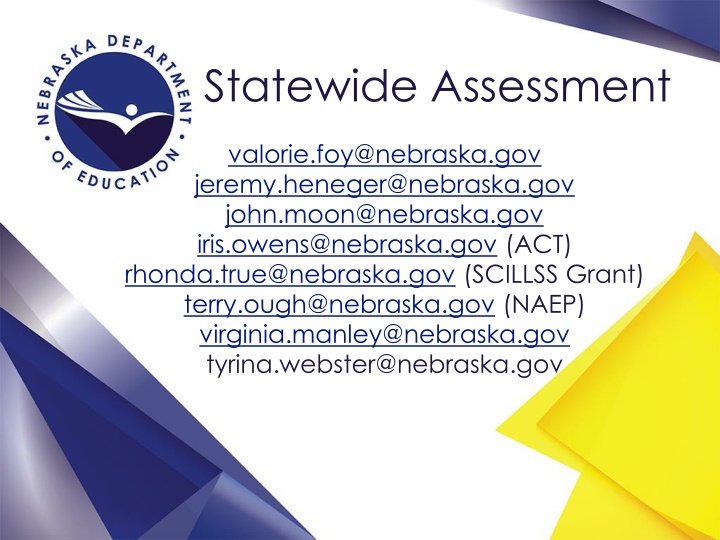
Insights into Nebraska Statewide Assessment with ACT Lessons Learned
Explore valuable information on Nebraska's Statewide Assessment program, focusing on the ACT exams. Discover insights, lessons learned, limitations, and coordinator details, providing a comprehensive view of the assessment process and helpful tips for successful administration.
Download Presentation

Please find below an Image/Link to download the presentation.
The content on the website is provided AS IS for your information and personal use only. It may not be sold, licensed, or shared on other websites without obtaining consent from the author. If you encounter any issues during the download, it is possible that the publisher has removed the file from their server.
You are allowed to download the files provided on this website for personal or commercial use, subject to the condition that they are used lawfully. All files are the property of their respective owners.
The content on the website is provided AS IS for your information and personal use only. It may not be sold, licensed, or shared on other websites without obtaining consent from the author.
E N D
Presentation Transcript
Statewide Assessment valorie.foy@nebraska.gov jeremy.heneger@nebraska.gov john.moon@nebraska.gov iris.owens@nebraska.gov (ACT) rhonda.true@nebraska.gov (SCILLSS Grant) terry.ough@nebraska.gov (NAEP) virginia.manley@nebraska.gov tyrina.webster@nebraska.gov
ACT- 2017 College Entrance Exam State Test Less Testing Time Student Motivation Positive Reactions
ACT Limitations Test Dates Accommodations Administration Customer Service Some mixed reactions
NDE ACT Coordinator Iris Owens Customer Service
ACT Lessons Learned from 2017
ACT Lessons Learned Timing codes and room assignments Cannot be mixed in a room Ahead of time (During Interest Inventory) tell your students to not bubble ahead or try to look back---automatic invalidation Tell your students-Alarms/Cell phones/Apple watches--bag at the door or shut them off- district choice Keep chasing your students 200 requests for information sent for 2017 scores for individual students Zero scores Non-college-reportable used for state purposes
ACT Lessons Learned Paper/pencil test administered on one day (except to accommodated students) If not tested on first paper date, unless accommodated, book goes back. Student answer document stays Any questions about which test form, call Online for make-ups (understand many activities during spring testing) Set timing correctly Causes the room to be invalidated Several school districts provided a Saturday test date
ACT College Entrance Exam ACT State Assessment of Proficiency
ACT Standard Setting Process Fall 2016--ACT Standard Setting Advisory Committee Grappled with the information early on and made some recommendations did not set standards June 2017--ACT Standard Setting Preliminary- Levels-Naming July 2017--ACT Cut score recommendations State Board of Education Technical Advisory Committee Assessment and Accountability Advisory Post-secondary information ACT scores for credit bearing courses
Nebraska State-Reported ACT Cut Scores Performance Level Math ELA Science ACT Benchmark 22 20 23 On Track 18 18 19 Developing
Definitions ACT Benchmark Students that meet or exceed the ACT College Readiness Benchmark are equipped to enroll (without remediation) and succeed in a credit- bearing first-year course at a two-year or four-year institution, trade school, or technical school. Students have at least a 50% chance of getting a B or better and a 75% chance of getting C or better in a first- year related content course. On Track On Track students are approaching the ACT College Readiness Benchmark and are likely to be able to access credit-bearing first-year related content course at some Nebraska postsecondary institutions without remediation. Developing Students in the Developing Level are likely to need developmental courses before being able to access credit-bearing first-year courses in the majority of Nebraska postsecondary institutions.
Additional Information In order to increase the chances of success after high school, students are encouraged to: engage in rigorous course work during their senior year take part in a wide range of career exploration activities build on existing strengths and address challenge areas work with adults to plan for college, career, and civic life gain work or volunteer experiences participate in activities beyond the classroom
ACT College and Career Readiness Standards (CCRS) Backbone of ACT assessments Empirically derived Descriptions of essential skills and knowledge students need for college and career Clearer meaning to test scores Serve as link between what students have learned and what ready to learn next
Topics in the flow to... Score Range 13 15 Score Range 16 19 Score Range 20 23 Score Range 24 27 Score Range 28 32 Score Range 33 36 Number and Quantity (N) N 201. Perform one- operation computation with whole numbers and decimals N 301. Recognize one-digit factors of a number N 401. Exhibit knowledge of elementary number concepts such as rounding, the ordering of decimals, pattern identification, primes, and greatest common factor N 501. Order fractions N 601. Apply number properties involving prime factorization N 701. Analyze and draw conclusions based on number concepts N 502. Find and use the least common multiple N 602. Apply number properties involving even/odd numbers and factors/multiples N 302. Identify a digit s place value N 702. Apply properties of rational numbers and the rational number system N 503. Work with numerical factors N 603. Apply number properties involving positive/negative numbers N 202. Recogniz e equivalent fractions and fractions in lowest terms N 504. Exhibit some knowledge of the complex numbers N 303. Locate rational numbers on the number line N 402. Write positive powers of 10 by using exponents N 703. Apply properties of real numbers and the real number system, including properties of irrational numbers N 604. Apply the facts that is irrational and that the square root of an integer is rational only if that integer is a perfect square N 403. Comprehend the concept of length on the number line, and find the distance between two points N 505. Add and subtract matrices that have integer entries Note: A matrix as a representation of data is treated here as a basic table. N 203. Locate positive rational numbers (expressed as whole numbers, fractions, decimals, and mixed numbers) on the number line N 404. Understand absolute value in terms of distance N 704. Apply properties of complex numbers and the complex number system N 605. Apply properties of rational exponents N 405. Find the distance in the coordinate plane between two points with the same x- coordinate or y- coordinate N 606. Multiply two complex numbers N 705. Multiply matrices N 607. Use relations involving addition, subtraction, and scalar multiplication of vectors and of matrices N 706. Apply properties of matrices and properties of matrices as a number system N 406. Add two matrices that have whole number entries
Topic s in the flow t o... Score Range 13 15 1-17 Score Range 16 19 Score Range 20 23 Score Range 24 27 Score Range 28 32 22-36 Score Range 33 36 18-21 Num ber and Quan tity (N) N 201. Per form one- operati on comput ation with whole number s and decima ls N 301. Rec ognize one-digit factors of a number N 401. Exhibit knowledge of elementary number concepts such as rounding, the ordering of decimals, pattern identificatio n, primes, and greatest N 501. Order fractions N 601. Apply number properties involving prime factorizatio n N 701. Analy ze and draw conclusio ns based on number concepts
Classroom Instruction Curriculum Assessment Student Learning

